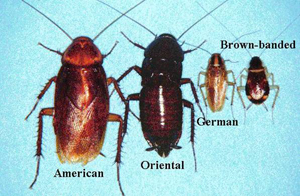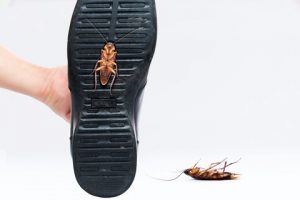COCKROACHES IN YOUR HOME?
Cockroaches are common insect pests found all over the world. Familiar to most people, cockroaches are very resourceful insects that can live, eat, and breed in your home without you even knowing it.
While they don’t usually bite, cockroaches can still cause health problems for some people in an infested house or apartment. Some people can experience allergy and asthma symptoms from breathing in cockroach skin and waste.
If you think you have cockroaches, do not panic. Finding roaches is not a sign that your house is dirty. Even if you clean regularly and maintain a tidy home, cockroaches can usually find food and water without much trouble. This allows them to thrive in many environments.
Getting into your home
Cockroaches are very resourceful insects that can enter your home in a number of different ways, including:
- Crawling inside through small holes and cracks in the building.
- Hitching a ride on bags, backpacks, suitcases and other containers.
- Finding openings around doors and windows.
- Moving from one apartment to another through pipes and other holes in shared walls.
Hiding in plain sight
Cockroaches are also great at hiding. There are many places throughout the home where a cockroach can hide. By understanding a cockroach’s ideal environment and feeding behavior, you may have a better chance of identifying areas in your home that a cockroach may prefer.


- Cockroaches prefer to shelter in narrow cracks and crevices.
- Check behind refrigerators, under sinks, and in dark drawers or cabinets.
- They forage for food at night, eating a wide variety of foods and non-food materials. This allows them to survive even in clean homes.
Prevention and monitoring
Prevention and monitoring are critical to avoiding a serious cockroach infestation. Fortunately, there are steps you can take at home to limit cockroach activity and prevent future infestations. Store food in sealed containers and keep pet dishes covered.
- Keep stove tops, counters and floors clean of grease and food.
- Repair plumbing leaks.
- Seal cracks and holes near doors, windows and other areas of the home.
- Monitor your home for signs of cockroaches: eggs, droppings, shed skins.
Managing an infestation
You might consider developing an Integrated Pest Management (IPM) plan that incorporates a variety of methods and knowledge of cockroach behavior to help manage an infestation. This approach can help you eliminate pests in an effective and less hazardous way.


There are different types of cockroaches. The first step is to find out the species of cockroach living in your home. Identification will allow you to learn about their biology and control, by helping you to understand the source of the infestation and behavior. Contact your local Cooperative Extension Service to help you with this task.
Here are a few steps to help you take control of a cockroach infestation:
- Locate as many active hiding places as possible. Look for warm areas with access to water. Use sticky traps to identify areas of high cockroach activity.
- Continue prevention and monitoring efforts to make your home less habitable for the insects.
- Get rid of clutter that cockroaches might use for hiding and breeding.
- If you decide to use pesticides, choose least toxic options first and always read and follow label directions carefully.



